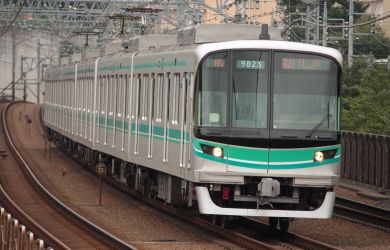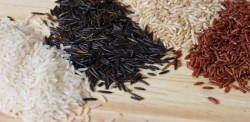
Originally published on metropolis.co.jp on November 2010

Courtesy of Kagoshima City

Courtesy of Minami Kyushu

Photo by Gregory Strong

Photo by Gregory Strong

Courtesy of Minami Kyushu

Courtesy of Heiwa Kaikan
Smoke-wreathed and sometimes spewing ash, Sakurajima looms over the port of Kagoshima in south Kyushu. Both majestic and slightly menacing, it offers a scene worthy of the dramatic events that have occurred here in the past.
Modern Japanese history weaves through this city of 610,000, one of the country’s less-traveled destinations. St. Francis Xavier’s 1594 mission began here, an event commemorated by the modest Gothic church downtown. Catholic missionaries were initially welcomed by the ruling Shimazu clan, which was eager for new trading opportunities. This powerful family ruled the region for 695 years, and had a singular position during the Tokugawa era, actually controlling the kingdom of the Ryukyu Islands (modern-day Okinawa). It’s thanks to their affluence and forward thinking that Kagoshima had some of Japan’s first factories, gas lights and telegraph lines, all of which are catalogued in the Reimeikan museum.
In Nanshu Cemetery, the city enshrines the grave of Saigo Takamori, the real-life “Last Samurai” who led the 1877 Satsuma rebellion—the final charge against modernization. Takamori fought for traditional values, as well as to oppose growing corruption in the new Meiji government, and the statues of him in Kagoshima and Tokyo’s Ueno Park attest to his folk hero status. The 2003 Hollywood blockbuster starring Tom Cruise and Ken Watanabe was loosely based on his story, including his last stand here on Mt. Shiroyama. Not far from the cemetery is the cave where he is supposed to have committed seppuku.
Takamori’s feudal Japan is present in Kagoshima’s principal attraction, Sangenan, the villa and garden of the Shimazu clan. Laid out three centuries ago on the slope of Mt. Shiroyama, the garden incorporates a view of the bay and Sakurajima into a spectacular borrowed landscape. Sangenan also possesses a rare kyokusui, or poetry-composing garden, where the 21st Lord Shimazu’s guests sat creating poems as they drank sake from cups floating down a brook.
Dominating the horizon, the 1,117-meter Sakurajima begs to be climbed, but as one of the world’s most active volcanoes, it’s largely off limits. A short hiking trail winds part of the way up its slopes, with the Yunohira Lookout at 373 meters providing some superb views. A 40km road, with homes, hotels and several onsen scattered along it, circles the volcano’s base. On its east side is the detritus from a major eruption in 1914: immense grey lava fields, and the partially buried torii of Kurokami shrine.
Beyond Kagoshima’s public art gallery and aquarium, typical for a city this size, are the unique attractions of the town of Chiran, 31km away. Built by the Sata family, the daimyo’s chief retainers, it preserves a row of quaint 17th-century homes collectively known as Bukeyashi (Samurai Street). Each has an exquisite garden with a miniature mountain landscape of stones and ponds or raked gravel.
The samurai spirit of a very different age is recalled at Chiran Peace Museum, which honors the 1,036 suicide pilots who flew from the Army air base here, most of them dying in the 1945 Battle of Okinawa. They belonged to army units called Shimbu (“military might”)—not to be confused with the more familiar kamikaze, who were actually navy suicide pilots. Four of their modified aircraft, little more than flying bombs, are displayed alongside photographs, letters home and even mascots, evoking the sense of individuals caught in a terrible war. Two films about these pilots—2001’s Hotaru (“Firefly”) and 2007’s For Those We Love—have spurred interest in the museum, and it now draws some 2,000 visitors daily.
Most trips to Kagoshima begin and end at Chuo station. Raucous vendors at the market flog local delicacies such as satsuma-age—deep-fried fish patties with ginger—and sweet-potato shochu and ice cream. Fittingly, a nearby monument relates how the Shimazu clan defied the Tokugawa shogunate and smuggled 19 men abroad in 1857, ushering in a new age.
Trip Tips

JAL and ANA offer daily flights to Kagoshima (2hrs, ¥39,000 one-way/¥70,200 roundtrip). There are tourist desks at the airport and at the east exit of Kagoshima Chuo station (open daily 8:30am-7pm; tel: 099-253-2500). From 9am-5pm, a tour bus runs from the station to all attractions, including Tenmokan shopping street (day passes ¥600, single fares ¥180). The Sakurajima ferry terminal is an 8min walk from downtown, and ferries for the 15min trip run around the clock (¥150). Budget accommodation options include business hotels near the station like Blue Wave Inn (singles from ¥7,665; www.bluewaveinn.jp/kagoshima) and the German-themed Gasthof (singles from ¥5,250; www.gasthof.jp).







